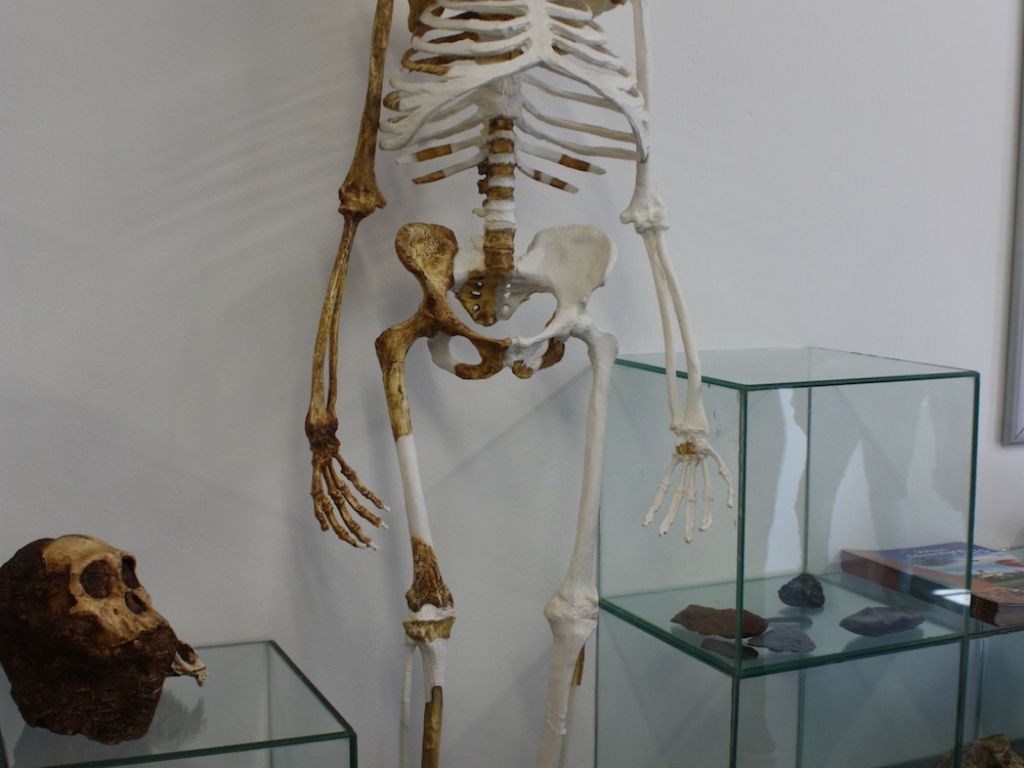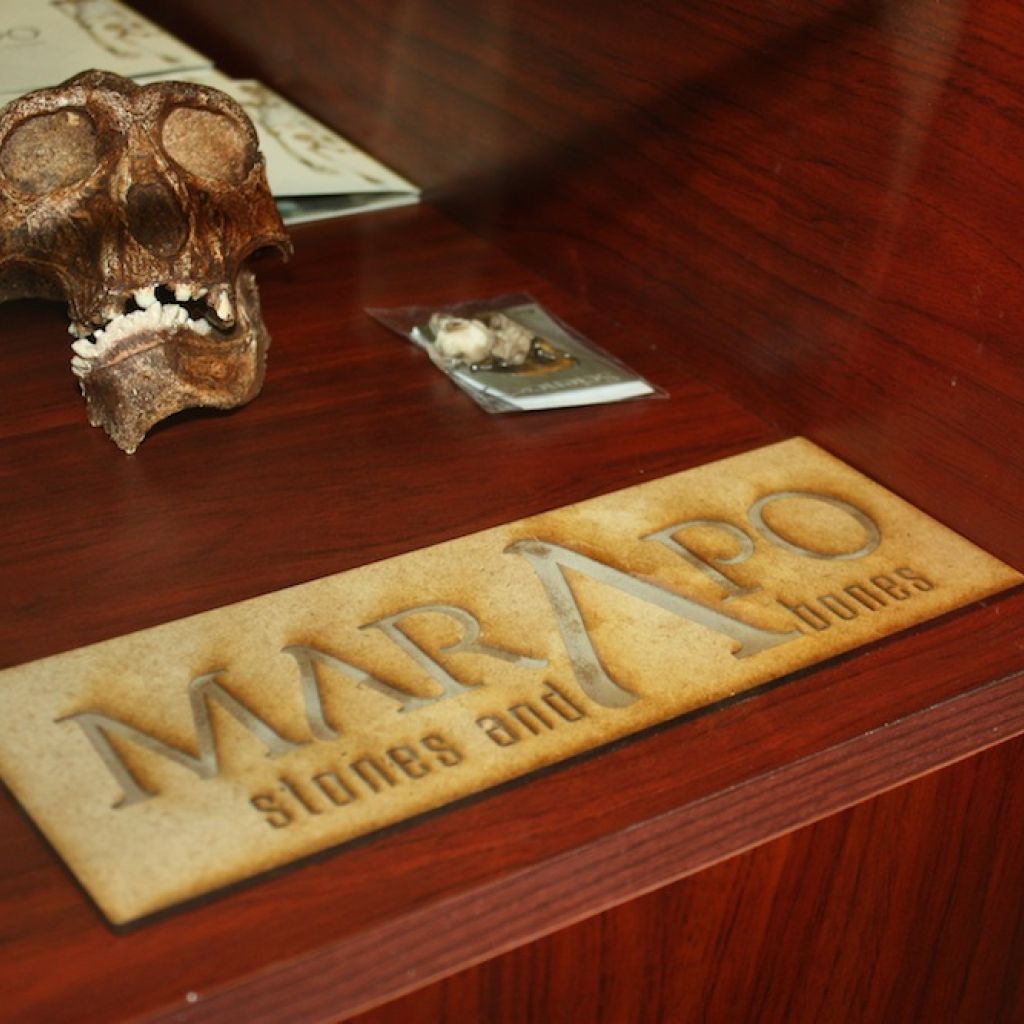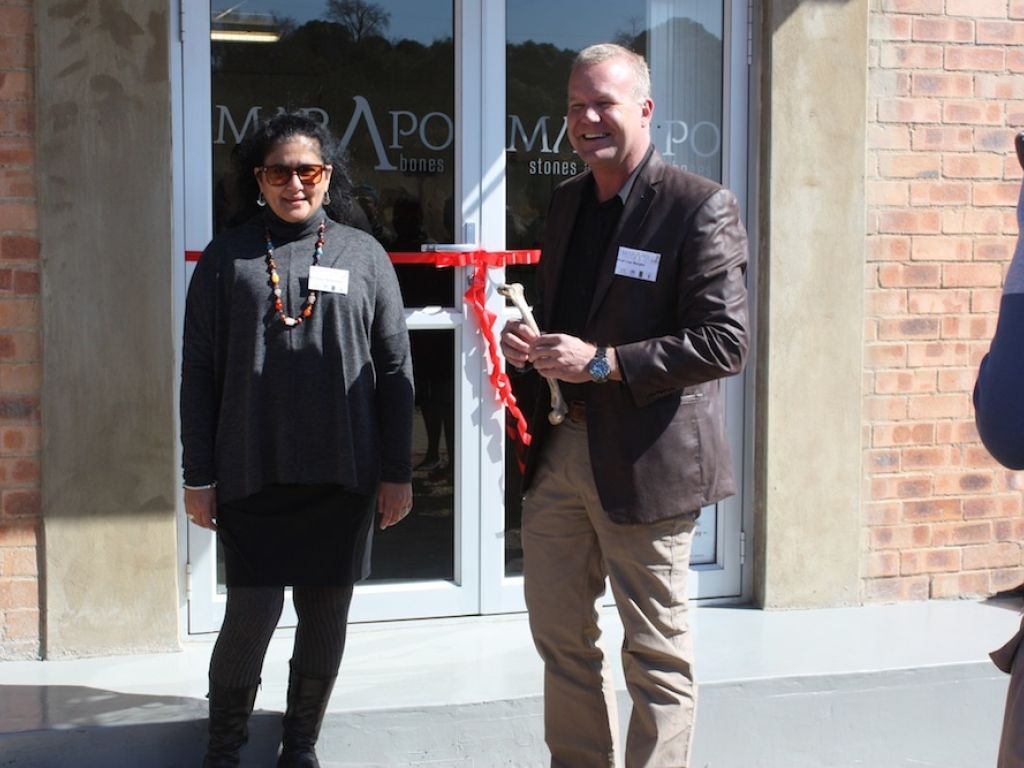Cast in stone (and bone): Marapo project launches at Sterkfontein

Visitors to the Sterkfontein Caves in the Cradle of Humankind World Heritage Site can now take home a locally produced fossil cast of a stone tool, early hominid skull or famous sediba fossil bone to remember their experience by.
Cast by a team of trained individuals from the local community, these casts, for sale at Marapo, represent the first step towards growing a national casting project that, in time, aims to supply schools, museums and natural science galleries with fossil casts of South Africa’s most famous finds.
A joint venture between the Cradle of Humankind Management Authority and the Centre for Evolutionary Studies at the University of the Witwatersrand (Wits), Marapo was launched at the Sterkfontein Caves on Friday 26 July 2013. It is a practical partnership between science and social development, designed to have a far-reaching impact, not just for palaeoanthropology.
“The Marapo project has exposed members of the Cradle of Humankind community to aspects of science they never knew existed, especially right on their doorstep,” says Marapo project leader Dr Merril van der Walt, of the Evolutionary Studies Institute at Wits.
“Via our training programme we’ve created skilled jobs for around 30 young people who can now cast fossils. At the same time we’ve fostered in them a passion for history and heritage,” she adds.
Using science as a vehicle for job creation within the World Heritage Site, the Marapo project is designed to benefit the local community. Casting technicians are trained in a lab, where they also receive skills in bone and fossil identification, art classes, and business and sales training.
“At Marapo, at the Sterkfontein Caves, members of the public can purchase high-quality casts of fossils, stones and bones, whose significance is preserved from a heritage perspective,” says Dawn Robertson, CEO of the Gauteng Tourism Authority.

The future of the casting facility
“It is envisioned that Marapo will provide open access to fossil casting for schools, scientific institutions and museums across the planet,” says Professor Lee Berger, best known for his discovery of Australopithecus sediba.
“We also aim to deliver fossil casts to museum gift shops around the world,” he adds.
Prof Berger alluded to the development of a lab to be built on the Malapa site (the site of discovery of Australopithecus sediba), which will create jobs for the community. He also hinted at a “heritage ambassador programme” that will enlist locals to promote the Cradle to the rest of the world.

For Maropeng, the Marapo project is a wonderful opportunity to showcase the heritage objects that lie within the Cradle of Humankind to the rest of the world.
“The Marapo project is central to what Maropeng aims to do – grow global awareness about humankind’s evolution and heritage. In time the project will enable casts to be delivered to learning institutions around the country, which will be promoted together with the Maropeng resource pack,” says Lindsay Marshall, communications manager at Maropeng.
Tony Rubin, Maropeng MD, agrees: “The project sees young adults in the areas employed in a skills set that will help grow awareness around Maropeng and the Cradle and what we are trying to achieve here. The fossil casts will be used in education, for presentations, for events and in the classroom.”